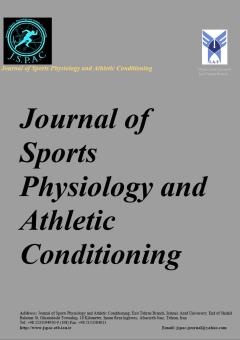The effect of aerobic exercise on the oxidative stress of brown adipose tissue
Subject Areas :
Nazanin Rahmannezhad
1
,
Mohammad Ali Azarbayjani
2
*
![]() ,
Saleh Rahmati Ahmadabad
3
,
Saleh Rahmati Ahmadabad
3
![]() ,
Maghsoud Peeri
4
,
Maghsoud Peeri
4
![]() ,
Hoseyn fatolahi
5
,
Hoseyn fatolahi
5
1 - Department of Exercise Physiology, Central Tehran Branch, Islamic Azad University, Tehran, Iran
2 - Department of Sport Physiology, Central Tehran Branch, Islamic Azad University, Tehran, Iran
3 - Department of Physical Education, Pardis Branch, Islamic Azad University, Pardis, Iran
4 - Department of Sports Physiology, Central Tehran Branch, Islamic Azad University, Tehran, Iran
5 - Department of Physical Education, Pardis Branch, Islamic Azad University, Pardis, Iran
Keywords: Aerobic exercise, brown adipose tissue, Nrf-2 and SIRT3,
Abstract :
Brown adipose tissue (BAT) plays a very critical role in controlling obesity and metabolic complications due to thermogenesis (fatty acid conversion into heat). Just as this tissue's natural activity prevents obesity, obesity can also disrupt its function through several mechanisms. This is especially due to the increase in oxidative stress. Many studies have shown that aerobic exercise improves the thermogenic function of BAT and exert an anti-obesity effect. However, aerobic exercise not only improves brown fat tissue function, but also protects it from oxidative damage by increasing its antioxidant defense capacity. Since aerobic exercise with moderate intensity can cause a physiological increase in reactive oxygen species (ROS), molecular studies have shown that ROS produced following aerobic exercise can enhance the expression of HSP72, Nrf-2 and SIRT3, and following It enhances the expression of antioxidant enzymes such as SOD, CAT, GPX and hemooxygenase in BAT. Considering that these enzymes (as enzymatic antioxidant defense) inhibit and neutralize all kinds of ROS, BAT's antioxidant defense capacity is increased and disruption of its biological functions is prevented.

